
How to Set href Value of an Anchor Tag in JavaScript
November 8, 2023
To set the href value of an anchor tag in JavaScript, you need to manipulate the DOM to target an <a> element and assign a new URL to its href attribute. This operation is common when dynamically updating links based on user actions or data changes.
Understanding the anchor element
The anchor element, defined by the <a> tag in HTML, is used to create hyperlinks. Its href attribute specifies the link's destination URL. In JavaScript, you can select and manipulate this element to change where the hyperlink points to.
Selecting the anchor element
To modify the href value, you first need to select the anchor element. You can do this using methods like document.getElementById(), document.querySelector(), or document.querySelectorAll() if targeting multiple links.
var anchor = document.getElementById('myAnchor'); // or var anchor = document.querySelector('.myAnchorClass');
Setting the href attribute
Once you have a reference to the anchor element, you can set its href attribute using the setAttribute method or by directly accessing the href property.
anchor.setAttribute('href', '<https://www.example.com>'); // or anchor.href = '<https://www.example.com>';
You could ship faster.
Imagine the time you'd save if you never had to build another internal tool, write a SQL report, or manage another admin panel again. Basedash is built by internal tool builders, for internal tool builders. Our mission is to change the way developers work, so you can focus on building your product.
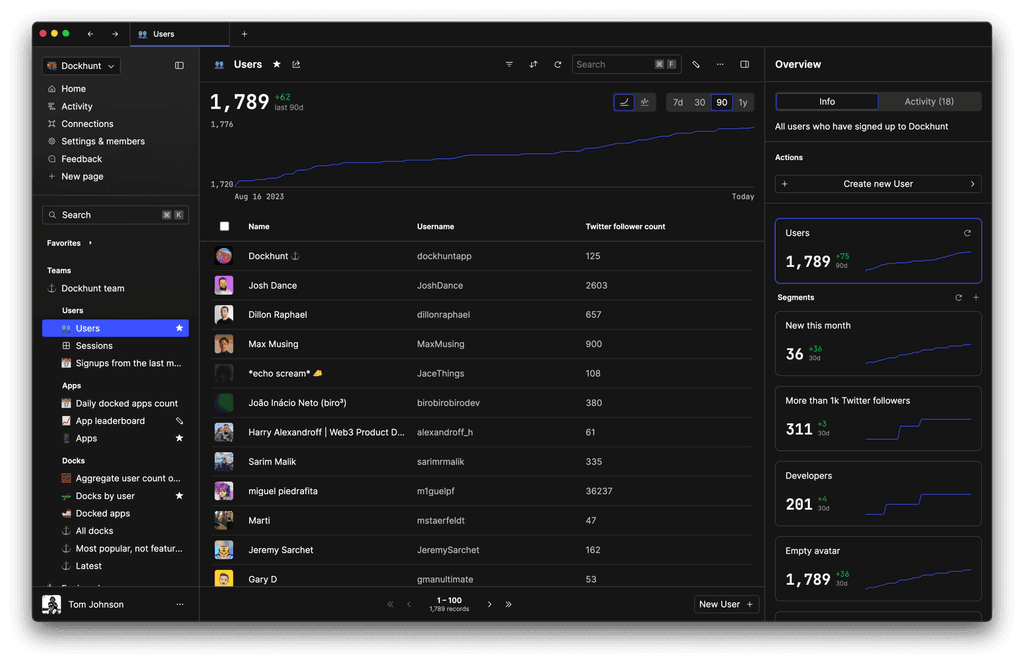
Updating multiple anchor tags
If you need to update several links, document.querySelectorAll() comes in handy. Iterate over the NodeList and set the href attribute for each element.
var anchors = document.querySelectorAll('.myAnchorClass'); anchors.forEach(function(anchor) { anchor.href = '<https://www.example.com>'; });
Responding to events
To dynamically set the href value in response to events, use event listeners. Add a listener to the relevant event and update the href within the callback function.
var button = document.getElementById('updateLinkButton'); button.addEventListener('click', function() { var anchor = document.getElementById('myAnchor'); anchor.href = '<https://www.example.com>'; });
Handling dynamic URLs
In applications where the URL is not static, you can build the href value at runtime using variables and then assign it to the anchor tag.
var userId = getUserID(); // Function to fetch or generate a user ID var anchor = document.getElementById('userProfileLink'); anchor.href = `https://www.example.com/user/${userId}`;
TOC
November 8, 2023
To set the href value of an anchor tag in JavaScript, you need to manipulate the DOM to target an <a> element and assign a new URL to its href attribute. This operation is common when dynamically updating links based on user actions or data changes.
Understanding the anchor element
The anchor element, defined by the <a> tag in HTML, is used to create hyperlinks. Its href attribute specifies the link's destination URL. In JavaScript, you can select and manipulate this element to change where the hyperlink points to.
Selecting the anchor element
To modify the href value, you first need to select the anchor element. You can do this using methods like document.getElementById(), document.querySelector(), or document.querySelectorAll() if targeting multiple links.
var anchor = document.getElementById('myAnchor'); // or var anchor = document.querySelector('.myAnchorClass');
Setting the href attribute
Once you have a reference to the anchor element, you can set its href attribute using the setAttribute method or by directly accessing the href property.
anchor.setAttribute('href', '<https://www.example.com>'); // or anchor.href = '<https://www.example.com>';
You could ship faster.
Imagine the time you'd save if you never had to build another internal tool, write a SQL report, or manage another admin panel again. Basedash is built by internal tool builders, for internal tool builders. Our mission is to change the way developers work, so you can focus on building your product.

Updating multiple anchor tags
If you need to update several links, document.querySelectorAll() comes in handy. Iterate over the NodeList and set the href attribute for each element.
var anchors = document.querySelectorAll('.myAnchorClass'); anchors.forEach(function(anchor) { anchor.href = '<https://www.example.com>'; });
Responding to events
To dynamically set the href value in response to events, use event listeners. Add a listener to the relevant event and update the href within the callback function.
var button = document.getElementById('updateLinkButton'); button.addEventListener('click', function() { var anchor = document.getElementById('myAnchor'); anchor.href = '<https://www.example.com>'; });
Handling dynamic URLs
In applications where the URL is not static, you can build the href value at runtime using variables and then assign it to the anchor tag.
var userId = getUserID(); // Function to fetch or generate a user ID var anchor = document.getElementById('userProfileLink'); anchor.href = `https://www.example.com/user/${userId}`;
November 8, 2023
To set the href value of an anchor tag in JavaScript, you need to manipulate the DOM to target an <a> element and assign a new URL to its href attribute. This operation is common when dynamically updating links based on user actions or data changes.
Understanding the anchor element
The anchor element, defined by the <a> tag in HTML, is used to create hyperlinks. Its href attribute specifies the link's destination URL. In JavaScript, you can select and manipulate this element to change where the hyperlink points to.
Selecting the anchor element
To modify the href value, you first need to select the anchor element. You can do this using methods like document.getElementById(), document.querySelector(), or document.querySelectorAll() if targeting multiple links.
var anchor = document.getElementById('myAnchor'); // or var anchor = document.querySelector('.myAnchorClass');
Setting the href attribute
Once you have a reference to the anchor element, you can set its href attribute using the setAttribute method or by directly accessing the href property.
anchor.setAttribute('href', '<https://www.example.com>'); // or anchor.href = '<https://www.example.com>';
You could ship faster.
Imagine the time you'd save if you never had to build another internal tool, write a SQL report, or manage another admin panel again. Basedash is built by internal tool builders, for internal tool builders. Our mission is to change the way developers work, so you can focus on building your product.

Updating multiple anchor tags
If you need to update several links, document.querySelectorAll() comes in handy. Iterate over the NodeList and set the href attribute for each element.
var anchors = document.querySelectorAll('.myAnchorClass'); anchors.forEach(function(anchor) { anchor.href = '<https://www.example.com>'; });
Responding to events
To dynamically set the href value in response to events, use event listeners. Add a listener to the relevant event and update the href within the callback function.
var button = document.getElementById('updateLinkButton'); button.addEventListener('click', function() { var anchor = document.getElementById('myAnchor'); anchor.href = '<https://www.example.com>'; });
Handling dynamic URLs
In applications where the URL is not static, you can build the href value at runtime using variables and then assign it to the anchor tag.
var userId = getUserID(); // Function to fetch or generate a user ID var anchor = document.getElementById('userProfileLink'); anchor.href = `https://www.example.com/user/${userId}`;
What is Basedash?
What is Basedash?
What is Basedash?
Ship faster, worry less with Basedash
Ship faster, worry less with Basedash
Ship faster, worry less with Basedash
You're busy enough with product work to be weighed down building, maintaining, scoping and developing internal apps and admin panels. Forget all of that, and give your team the admin panel that you don't have to build. Launch in less time than it takes to run a standup.
You're busy enough with product work to be weighed down building, maintaining, scoping and developing internal apps and admin panels. Forget all of that, and give your team the admin panel that you don't have to build. Launch in less time than it takes to run a standup.
You're busy enough with product work to be weighed down building, maintaining, scoping and developing internal apps and admin panels. Forget all of that, and give your team the admin panel that you don't have to build. Launch in less time than it takes to run a standup.
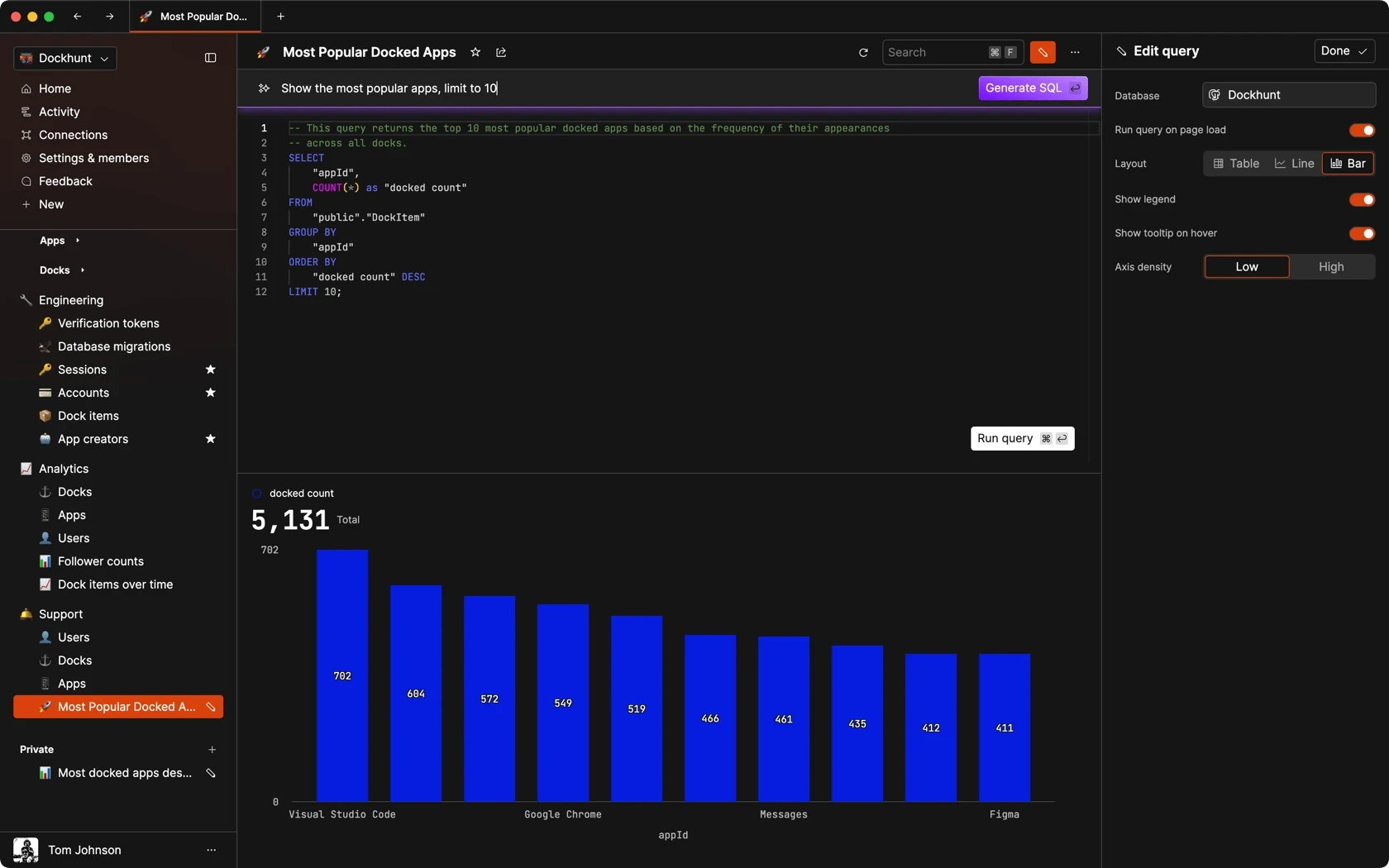
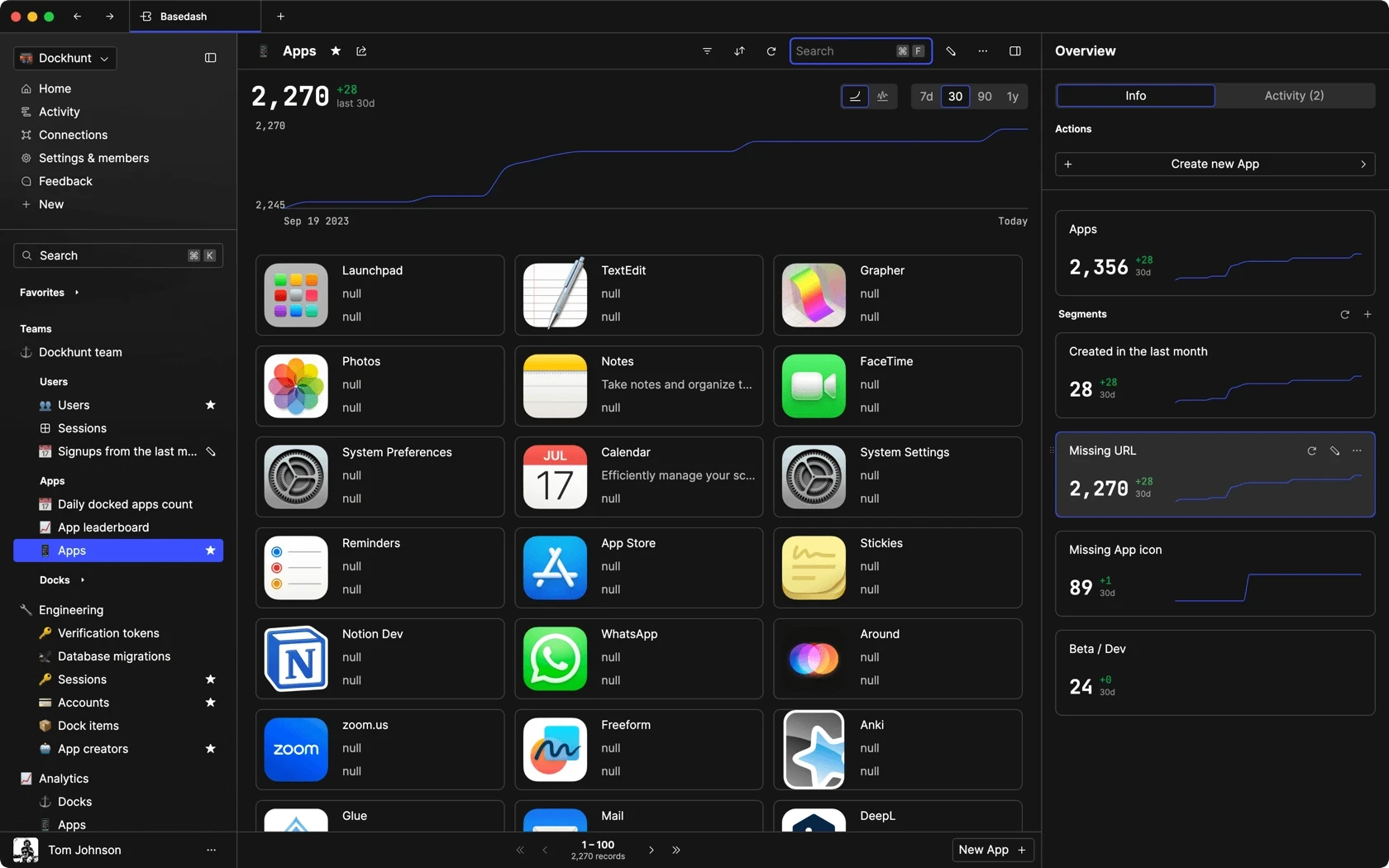
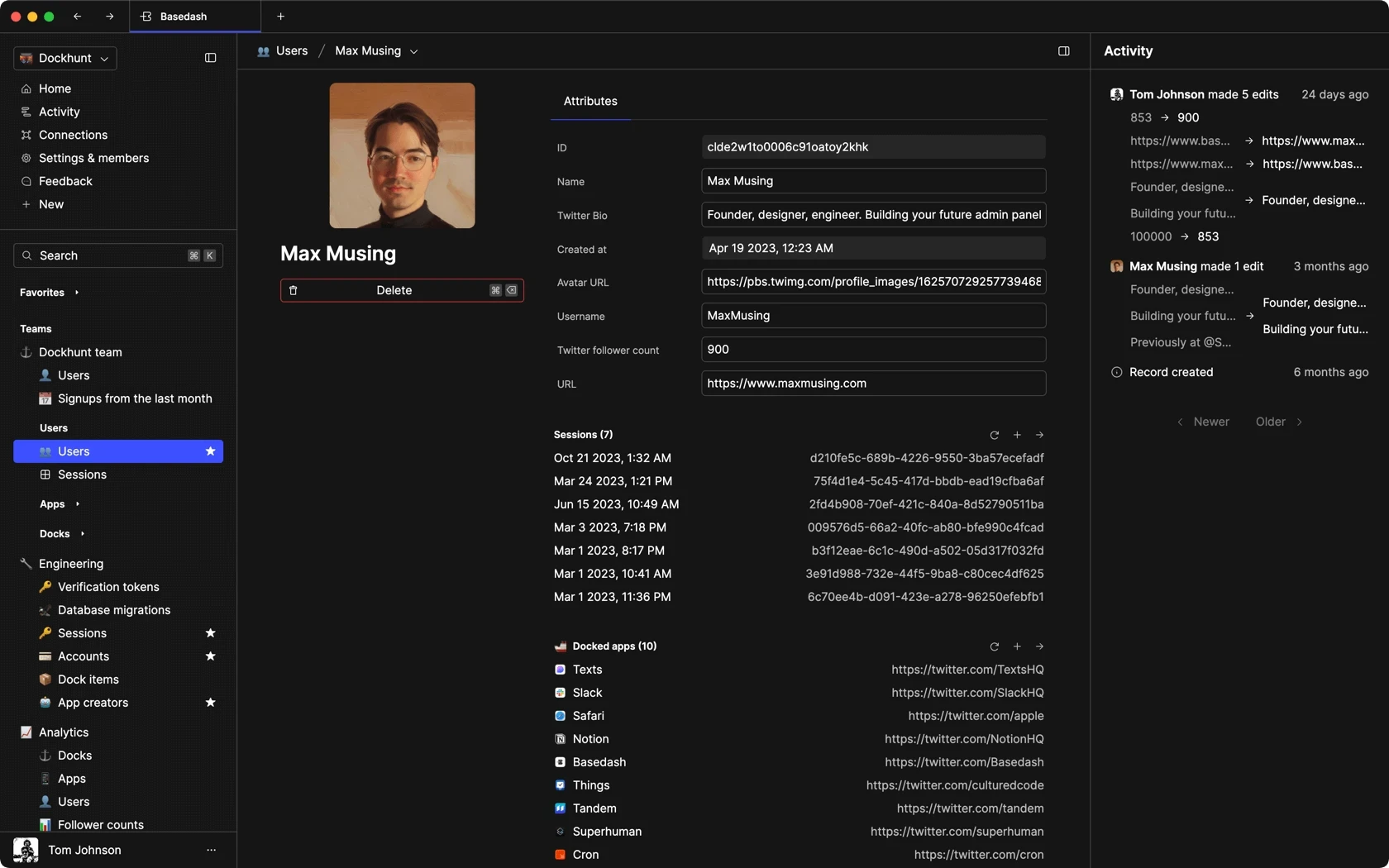
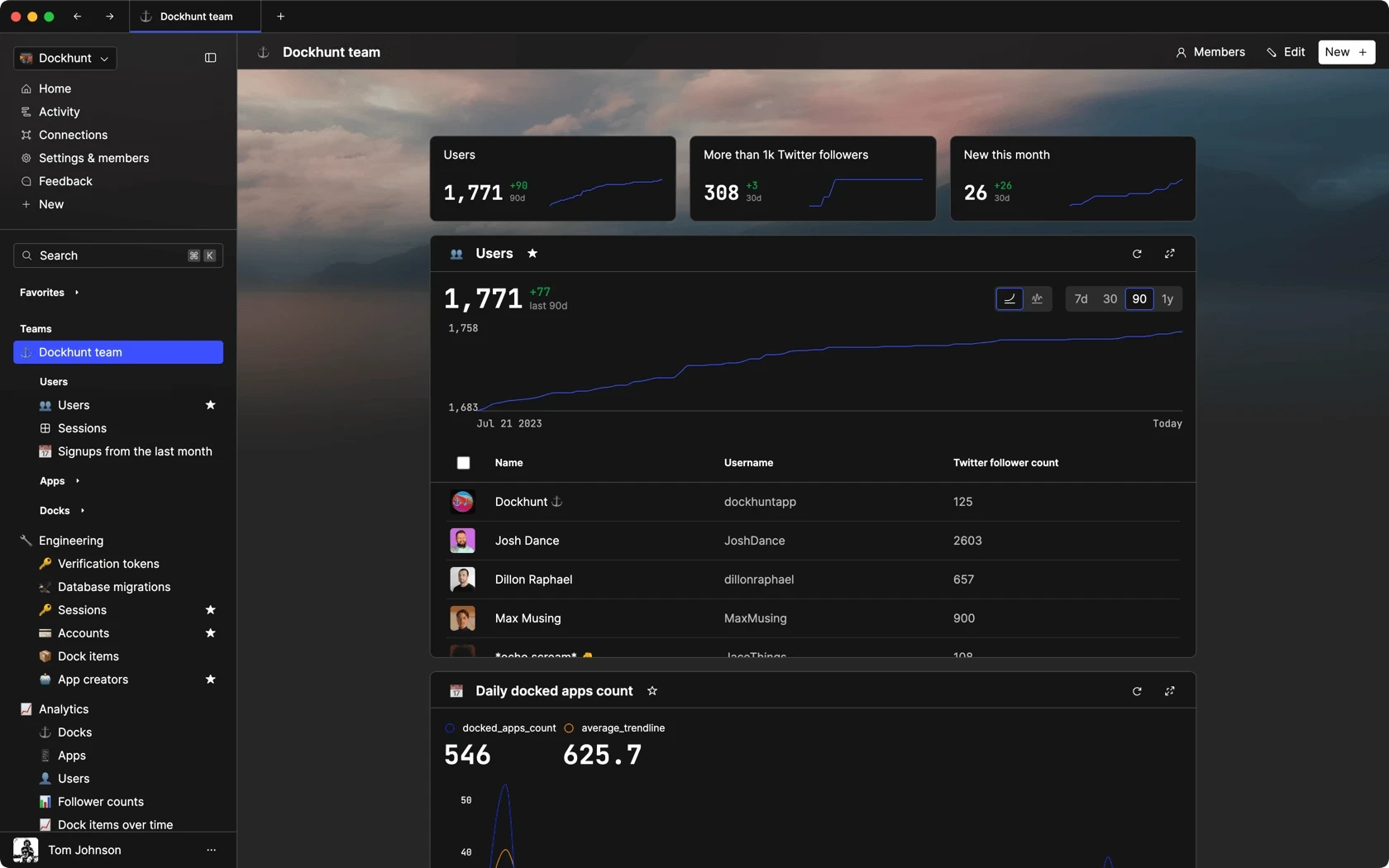
Dashboards and charts
Edit data, create records, oversee how your product is running without the need to build or manage custom software.
USER CRM
ADMIN PANEL
SQL COMPOSER WITH AI
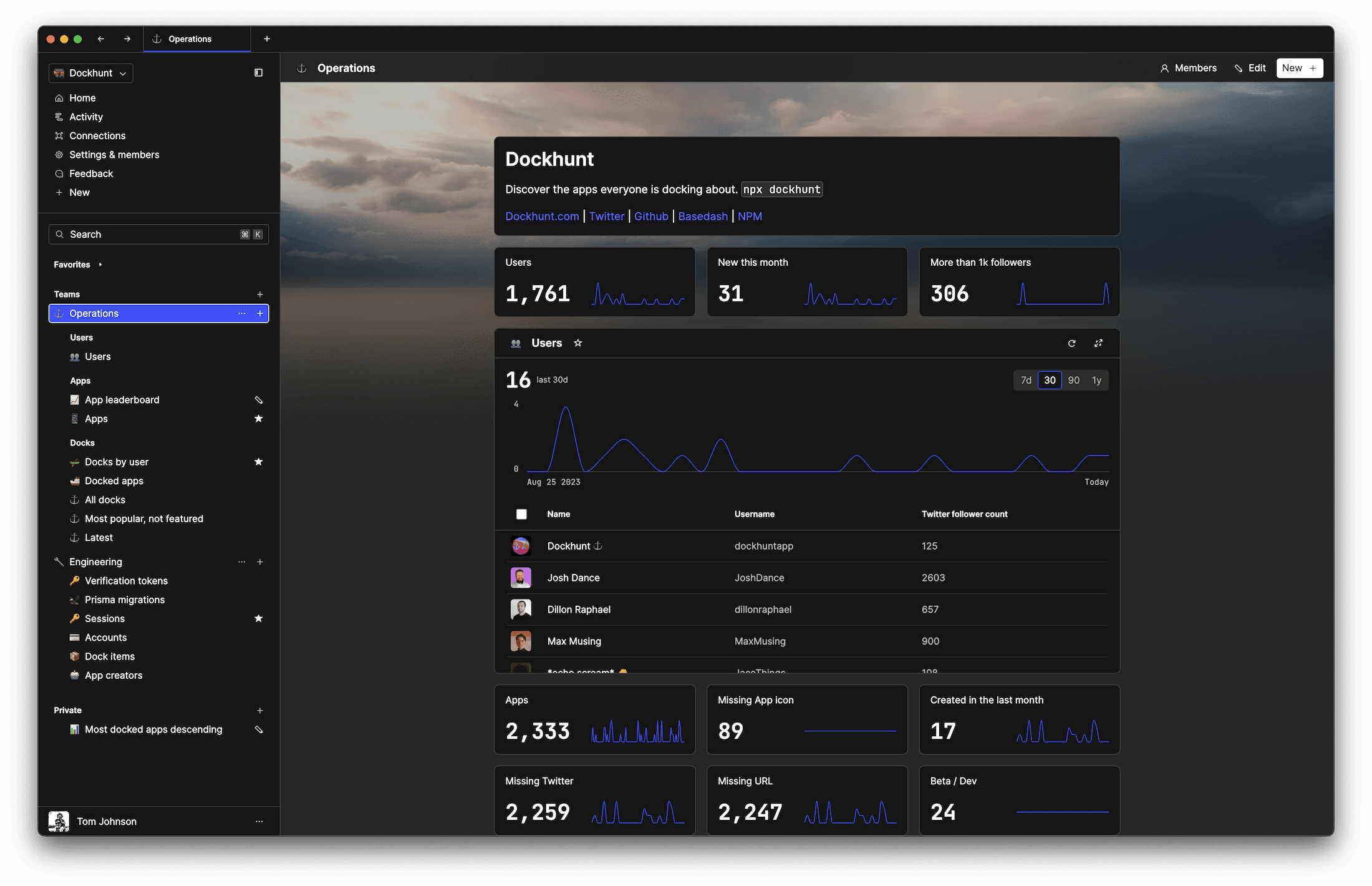
Related posts
Related posts
Related posts



How to Remove Characters from a String in JavaScript
Jeremy Sarchet



How to Sort Strings in JavaScript
Max Musing



How to Remove Spaces from a String in JavaScript
Jeremy Sarchet



Detecting Prime Numbers in JavaScript
Robert Cooper



How to Parse Boolean Values in JavaScript
Max Musing



How to Remove a Substring from a String in JavaScript
Robert Cooper
